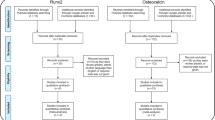Abstract
Osteoclast inhibitory lectin (OCIL) is a newly recognized inhibitor of mouse and human osteoclast differentiation whose cellular expression is similar to that of receptor activator of nuclear factor κB (RANKL). The main objective of the present work was to elucidate whether naturally occurring single-nucleotide polymorphisms (SNPs) in this gene could be associated with bone mass in postmenopausal women. To that end, we studied the association of bone mineral density (BMD) measured by dual-energy X-ray absorptiometry with two nonsynonymous SNPs in the OCIL gene resulting in Asn19Lys and Leu23Val substitutions in a population of 500 postmenopausal Spanish women. A weak association was detected for Asn19Lys SNP with femoral neck (FN) BMD and lumbar spine (LS) BMD in the whole population. When the population was stratified by age, however, the association was strong in older women (≥53 years). Thus, in this group of participants, women with CG/GG genotype displayed reductions of 5.6% and 6.7% in FN BMD and LS BMD adjusted by age and body mass index (BMI), respectively, compared to women with CC genotype. The Asn19Lys SNP alleles explained about 7% of BMD variance in older women but only 1.7–3.9% in the whole population in regression models including age and BMI. In conclusion, women with a lysine (GG genotype) at position 19 of the OCIL protein displayed lower BMD at femoral neck and at lumbar spine sites than women having an asparagine residue. Since the OCIL protein inhibits osteoclast differentiation, this amino acid substitution could have consequences for OCIL functionality.


Similar content being viewed by others
References
Ammann P, Rizzoli R (2003) Bone strength and its determinants. Osteoporos Int 14(Suppl 3):S13–S18
Turner CH (2006) Bone strength: current concepts. Ann N Y Acad Sci 1068:429–446
Ralston SH, de Crombrugghe B (2006) Genetic regulation of bone mass and susceptibility to osteoporosis. Genes Dev 20:2492–2506
Ralston SH (2005) Genetic determinants of osteoporosis. Curr Opin Rheumatol 17:475–479
Garcia-Perez MA (2006) Physiological regulation of bone metabolism and estrogen agonism. In: Cano A, Calaf i Alsina J, Dueñas-Díez JL (eds) Selective estrogen receptor modulators: a new brand of multitarget drugs. Springer, Berlin, pp 159–184
Zhou H, Kartsogiannis V, Hu YS, Elliott J, Quinn JM, McKinstry WJ, Gillespie MT, Ng KW (2001) A novel osteoblast-derived C-type lectin that inhibits osteoclast formation. J Biol Chem 276:14916–14923
Boles KS, Barten R, Kumaresan PR, Trowsdale J, Mathew PA (1999) Cloning of a new lectin-like receptor expressed on human NK cells. Immunogenetics 50:1–7
Zhou H, Kartsogiannis V, Quinn JM, Ly C, Gange C, Elliott J, Ng KW, Gillespie MT (2002) Osteoclast inhibitory lectin, a family of new osteoclast inhibitors. J Biol Chem 277:48808–48815
Aldemir H, Prod’homme V, Dumaurier MJ, Retiere C, Poupon G, Cazareth J, Bihl F, Braud VM (2005) Cutting edge: lectin-like transcript 1 is a ligand for the CD161 receptor. J Immunol 175:7791–7795
Takayanagi H, Ogasawara K, Hida S, Chiba T, Murata S, Sato K, Takaoka A, Yokochi T, Oda H, Tanaka K, Nakamura K, Taniguchi T (2000) T-cell-mediated regulation of osteoclastogenesis by signalling cross-talk between RANKL and IFN-gamma. Nature 408:600–605
Hu YS, Zhou H, Myers D, Quinn JM, Atkins GJ, Ly C, Gange C, Kartsogiannis V, Elliott J, Kostakis P, Zannettino AC, Cromer B, McKinstry WJ, Findlay DM, Gillespie MT, Ng KW (2004) Isolation of a human homolog of osteoclast inhibitory lectin that inhibits the formation and function of osteoclasts. J Bone Miner Res 19:89–99
Nakamura A, Ly C, Cipetic M, Sims NA, Vieusseux J, Kartsogiannis V, Bouralexis S, Saleh H, Zhou H, Price JT, Martin TJ, Ng KW, Gillespie MT, Quinn JM (2007) Osteoclast inhibitory lectin (OCIL) inhibits osteoblast differentiation and function in vitro. Bone 40:305–315
Garcia-Perez MA, Moreno-Mercer J, Tarin JJ, Cano A (2006) Similar efficacy of low and standard doses of transdermal estradiol in controlling bone turnover in postmenopausal women. Gynecol Endocrinol 22:179–184
Garcia-Perez MA, Moreno-Mercer J, Tarin JJ, Cano A (2004) Bone turnover markers and PTH levels in surgical versus natural menopause. Calcif Tissue Int 74:143–149
Barrett JC, Fry B, Maller J, Daly MJ (2005) Haploview: analysis and visualization of LD and haplotype maps. Bioinformatics 21:263–265
Stephens M, Scheet P (2005) Accounting for decay of linkage disequilibrium in haplotype inference and missing-data imputation. Am J Hum Genet 76:449–462
Stephens M, Smith NJ, Donnelly P (2001) A new statistical method for haplotype reconstruction from population data. Am J Hum Genet 68:978–989
Gauderman WJ (2002) Sample size requirements for association studies of gene–gene interaction. Am J Epidemiol 155:478–484
Zaidi M (2007) Skeletal remodeling in health and disease. Nat Med 13:791–801
Ramensky V, Bork P, Sunyaev S (2002) Human non-synonymous SNPs: server and survey. Nucleic Acids Res 30:3894–3900
Acknowledgements
The authors are indebted to Ms. Rosa Aliaga and Ms. Elvira Calap for their excellent technical assistance. This work was supported by grants PI060154 from Fondo de Investigación Sanitaria (FIS, Madrid, Spain) and AP-024/07 from Consellería de Sanitat and 045/2007 from EVES (Generalitat Valenciana). M. A. G.-P. is a recipient of a research contract from FIS–Consellería de Sanitat (Generalitat Valenciana).
Author information
Authors and Affiliations
Corresponding author
Rights and permissions
About this article
Cite this article
Pineda, B., Laporta, P., Cano, A. et al. The Asn19Lys Substitution in the Osteoclast Inhibitory Lectin (OCIL) Gene is Associated with a Reduction of Bone Mineral Density in Postmenopausal Women. Calcif Tissue Int 82, 348–353 (2008). https://doi.org/10.1007/s00223-008-9135-4
Received:
Accepted:
Published:
Issue Date:
DOI: https://doi.org/10.1007/s00223-008-9135-4




